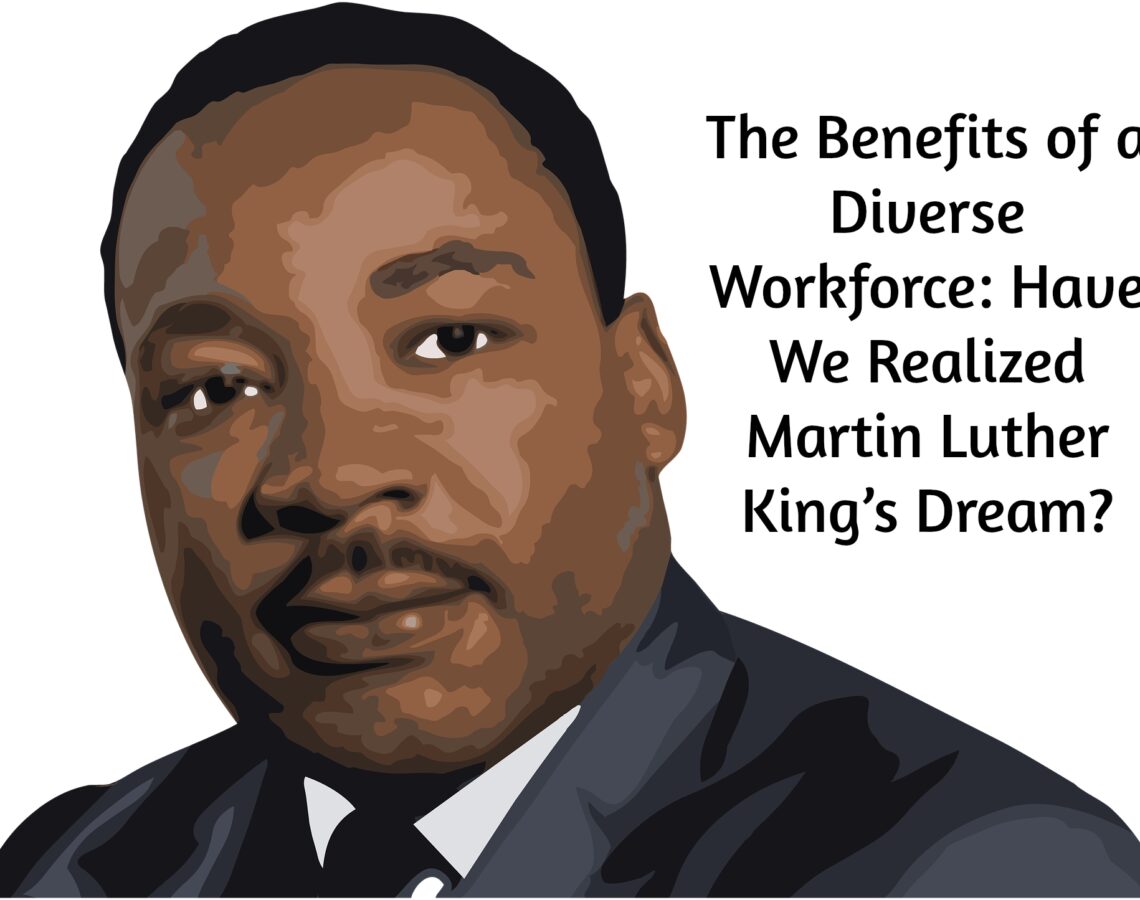The Benefits of a Diverse Workforce: Have We Realized Martin Luther King’s Dream?

The echoes of Martin Luther King’s epoch defining “I have a dream” speech have lost none of their power or significance. The question is whether we are yet to realize this dream, or even making steady progress towards its actualization.
True, the world at work today is far more diverse than it was during the revolutionary period of the 60s and 70s. In fact, according to SHRM (Society for Human Resource Management) “diversity and inclusion has grown as a corporative imperative”. (Cited in https://www.talentintelligence.com/blog/bid/377611/inclusion-and-the-benefits-of-diversity-in-the-workplace)
Stephanie K. Johnson writing for The Harvard Business Review says the benefits of diversity are clear. Workforces with a varied makeup are shown to be more innovative with a higher level of employee engagement. Moreover, Johnson says companies with a greater gender and racial mix outperform their competitors.
In her research, Johnson interviewed 11 CEOs who publicly stated their commitment to create a more diverse workforce. The most popular reason given by the CEOs for investing in a workforce with a more heterogeneous makeup was, “they believed (it) leads to greater diversity of thought, to the ability to attract and retain top talent, and to a better understanding of their customer base.” (Cited in https://hbr.org/2017/08/what-11-ceos-have-learned-about-championing-diversity)
Among the CEO’s that Johnson interviewed was YouTube’s CEO, Susan Wojcicki, who said diversity is essential for her company not “falling behind, and losing their competitive edge”. Other CEOs, such as Salesforce’s Marc Benioff, said diversity was central to building a company culture shaped by equality. Benioff remarked that employee’s feedback reflects their desire to work for a firm embracing diversity. Having a strong value of diversity enables Benioff’s company to find employees whose outlook matches his company’s.
Part of the vision of creating a company that values diversity is developing initiatives and programs that reflect this value. One of the eleven CEOs given in Stephanie K. Johnson’s research was for The Gap where they devised a program called ‘Woman and Opportunity’. The vision of this program is to give women the required skills to transition towards future leadership opportunities.
Other research by global management consulting firm McKinsey & Co found “Companies in the top quartile of executive-board diversity had returns on equity that were 53% higher than those in the bottom quartile.” This suggests that diversity in Senior Leadership has significance for current and future financial success. (Cited in Workplace Diversity and Inclusion Gets Innovative https://www.shrm.org/hr-today/news/hr-magazine/0217/pages/disrupting-diversity-in-the-workplace.aspx)
One of the challenges in creating a diverse workforce is getting to learn how to work with other cultures. It might take more time and effort. Yet this extra effort leads to improved collaboration with favorable results. As Director of the NeuroLeadership Institute based in New York City says, “They (a multi-diverse workforce) challenge their own and others’ thinking”.
The benefits of diversity are being embraced by many of today’s business leaders. Diversity must become a central part of one’s business culture. It’s no longer just about doing the “right thing” or understanding your customers better, but research shows it’s more profitable and allows firms a competitive advantage over their competition.
By: Jonathan Gordon
For more information, please contact:
Shepherd Search Group®
Diversity Leadership Team
845.570.4292
www.shepherdsg.com
